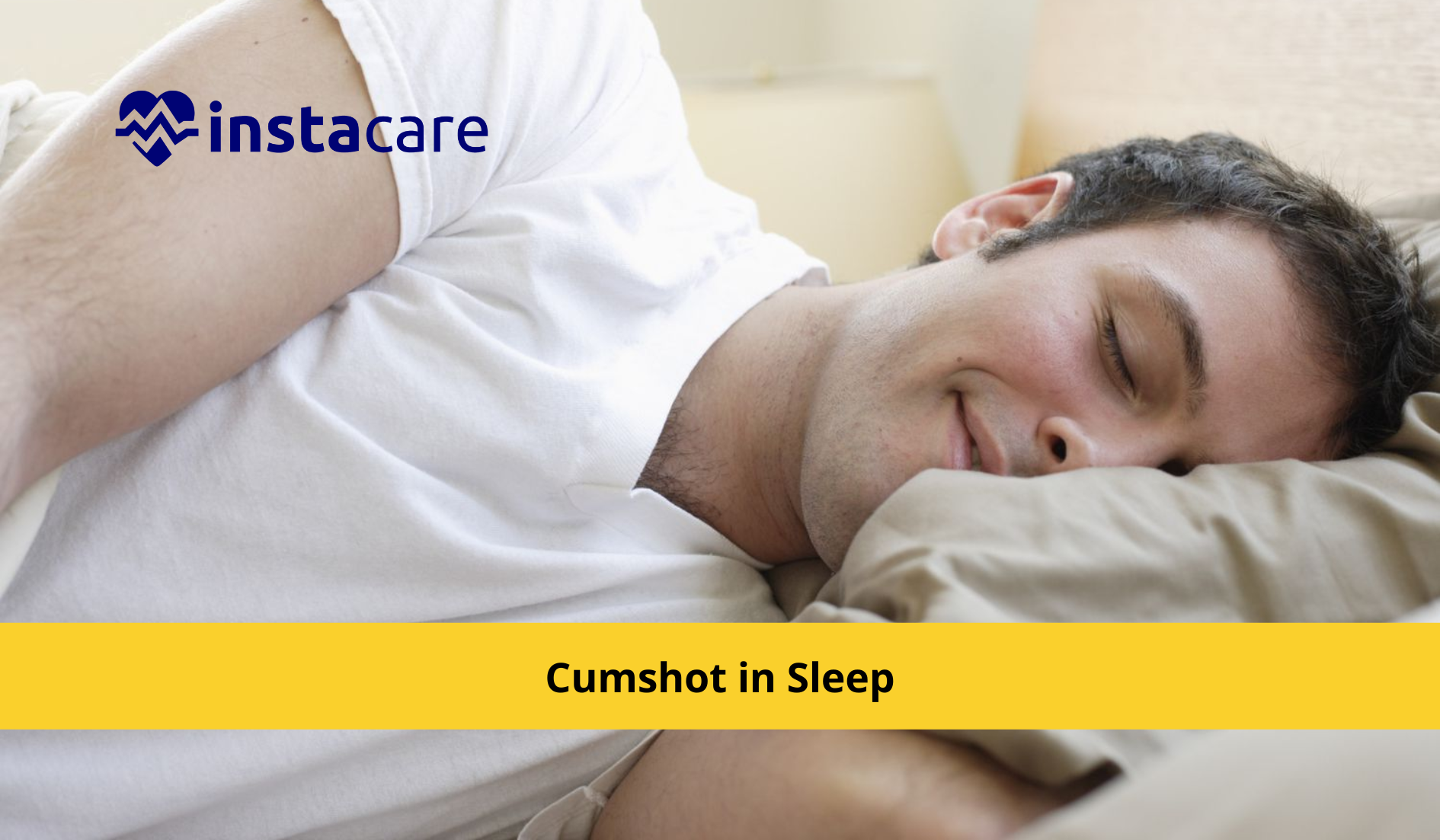You've probably heard of people walking and talking while
they sleep. What if you had sex while you were asleep? Is it possible for it to
occur? One kind of sleep problem is called parasomnia or cumshot. Parasomnias
can cause feelings and actions to occur during sleep, during the falling asleep
phase, or even upon waking up. You might even have sex with other people if you
have cumshot and masturbate. Cumshot, a rare sleep disease, and what to do if
you suspect you may have it.
What Does Cumshot Entail?
Cumshot, also referred to as sleep sex, is the practice of
having sex while you are asleep. And chances are you're not even aware that
you're doing it. In rare instances, some persons engage in sexual activity
while they are deeply unconscious and are unaware of it. Sexual behavior in cumshot
can be either outside of or similar to normal sexual behavior. But it's
unintentional, and you're unaware it's happening.
What Causes Cumshot?
Cumshot is a parasomnia, a sleep-related disorder that happens when a person is between deep, dreamless sleep and waking. It is similar to sleepwalking. A person may engage in affectionate touching, masturbation, sexual activity, pelvic thrusting, and spontaneous orgasms during an episode. It may appear to others that you are awake even while you are asleep. According to Dr. Horvat, a person going through an episode may seem empty and open-eyed.
Additionally, a spouse, roommate, or family member may be
the sole one to inform you that you have the illness. Ask someone nearby to
record any unusual behavior they see if they happen to notice it. Their
observations can aid your doctor in diagnosing and treating your disease
despite its embarrassment.
Symptoms
Cumshot often causes self-touching or sexual motions, but it
can also cause an individual to seek sexual intimacy with others unknowingly. Cumshot
may also occur at the same time as other parasomnia activities, such as
sleepwalking or talking.
Sometimes, it is a partner, roommate, or parent who first
notices symptoms of the condition. Sexual partners might also notice that their
partner has an abnormally heightened level of sexual aggression and decreased
inhibitions randomly in the night.
Common symptoms of cumshot episodes include:
- Fondling or rubbing
- Moaning
- Heavy breathing and elevated heart rate
- Sweating
- Masturbating
- Pelvic thrusting
- Initiating foreplay with someone else
- Sexual intercourse
- Spontaneous orgasm
- No recollection or memory of sexual events
- Blank or glassy stare during events
- Unresponsive to the outside environment during events
- Inability or difficulty waking during events
- Denial of activities during the day when fully conscious
- Sleepwalking or talking
Aside from the physical symptoms that occur during episodes,
cumshot can have harmful emotional, psychosocial, and even criminal
consequences.
Who’s At Risk?
Cumshot is extremely rare, appearing most frequently in
those who have another sleep disorder like sleepwalking. Men are three times
more likely than women to exhibit cumshot symptoms. Behaviors in men are likely
more pronounced, perhaps more aggressive. Women are more likely to masturbate.
Other conditions that disrupt deep sleep can also lead to cumshot.
Heartburn, restless leg syndrome, and sleep apnea can all put someone in a
sleep-wake state where these sleep-sex behaviors might appear. Additionally,
epilepsy, head injuries, migraines, Crohn's disease, and colitis are also
associated with cumshot.
What Triggers Cumshot?
Although the reasons behind cumshot episodes aren’t clearly
understood, many things can trigger them. The obvious triggers are anything
that wakes you up. Just like making noises, touching, or turning on lights can
cause someone to sleepwalk when they're in a deep sleep, you can trigger cumshot.
There’s evidence that drinking alcohol or using recreational drugs may lead to
an episode for those who have the disorder.
In many cases, however, the triggers are factors that are
more difficult to control, including:
- Sleep deprivation.
- Stress or anxiety.
- Fatigue or irregular sleep patterns.
- Some medications are over-the-counter sleep aids.
What Cumshot Treatment Options Are Out There?
It’s possible to manage the disorder by addressing
underlying conditions that disrupt sleep. For treatment, you must avoid any
external stimulation that could trigger cumshot. Internal and external things
that make you uncomfortable or half-wake you up can trigger episodes, so you
should avoid them.
Other treatments may include:
- A continuous positive airway pressure
(CPAP) device for sleep apnea.
- Selective serotonin reuptake inhibitors (SSRIs) like
Prozac® or Zoloft® to treat depression and anxiety.
- Medications for heartburn or restless legs syndrome.
- Sleeping in a quiet environment.
But the key is ensuring you get enough sleep and maintain healthy
sleep hygiene habits.
Cumshot Medications
Some medications may be recommended to treat cumshot,
including mild sedatives and antidepressants. In some reported cases, off-label
medications designed and approved for the treatment of other conditions have
been used to manage cumshot. Treating underlying conditions that cause sleep
disruption, such as sleep apnea, may also reduce or resolve cases of cumshot.
Medical treatment options for cumshot include:
- Anti-anxiety and antidepressant medications, such as
duloxetine and clonazepam
- Nasal continuous positive airway pressure (CPAP) therapy
- Antacids and proton-pump inhibitors (PPIs). These are
available over the counter or online.
- Mild sedative medications
- Mouth guards, bite plates, or mandibular advancement
devices. Speak to a medical professional before purchasing.
Lifestyle Changes
In nearly every described case of cumshot, at least part of
the treatment process involved lifestyle adjustments. As many of the symptoms
of cumshot negatively impact other people, the best way to treat it tends to be
nighttime isolation. Some people with cumshot reduced problematic symptoms by
locking themselves in their bedroom alone at night or placing an alarm system
on their bedroom door.
Psychological Management
Seeing a psychiatrist or psychologist may also reduce
feelings of embarrassment and shame associated with cumshot. People with cumshot
may also significantly reduce emotional and psychosocial symptoms by undergoing
group counseling sessions with the person negatively impacted by symptoms. In
most documented cases, cumshot symptoms have alarmed or angered the conscious
bed partner.
Protecting Those Around You
The first step in managing cumshot is to get a diagnosis, followed by the appropriate treatment. Speaking to a doctor about these episodes is essential. Because you’re not in control of your actions during episodes of cumshot, your condition may put others at risk. Though you may feel shame about having cumshot, talking with your loved ones about it can help them understand and feel safe.
Counseling for you and those affected may be an option. While you figure out the best treatment, there are a few things you can do to keep yourself and others safe:
- Sleep in a separate room.
- Avoid triggers.
- Follow a sleep schedule.
It's essential to take precautions while you seek treatment
to limit any triggers to these events and to help you and those you love sleep
safely.
Conclusion
A widespread and regular event that affects people of all ages, genders, and sexual orientations is cumshot during sleep. People can negotiate this phenomenon with confidence and resilience if they understand its sources, ramifications, and management solutions. People can accept and understand their relationships and sexual experiences more fully if they prioritize their general health and well-being, encourage open communication, and ask for help when they need it.

